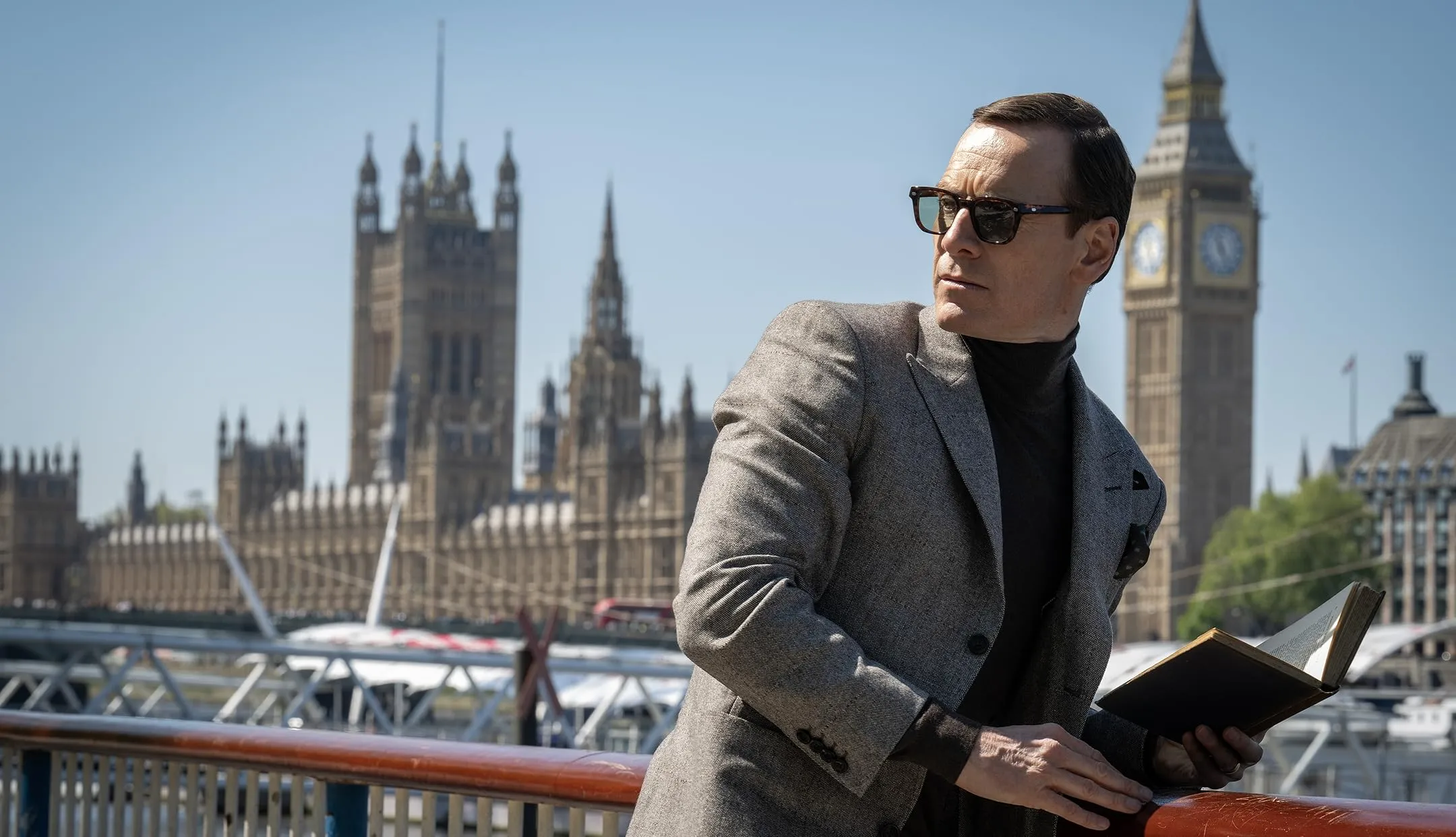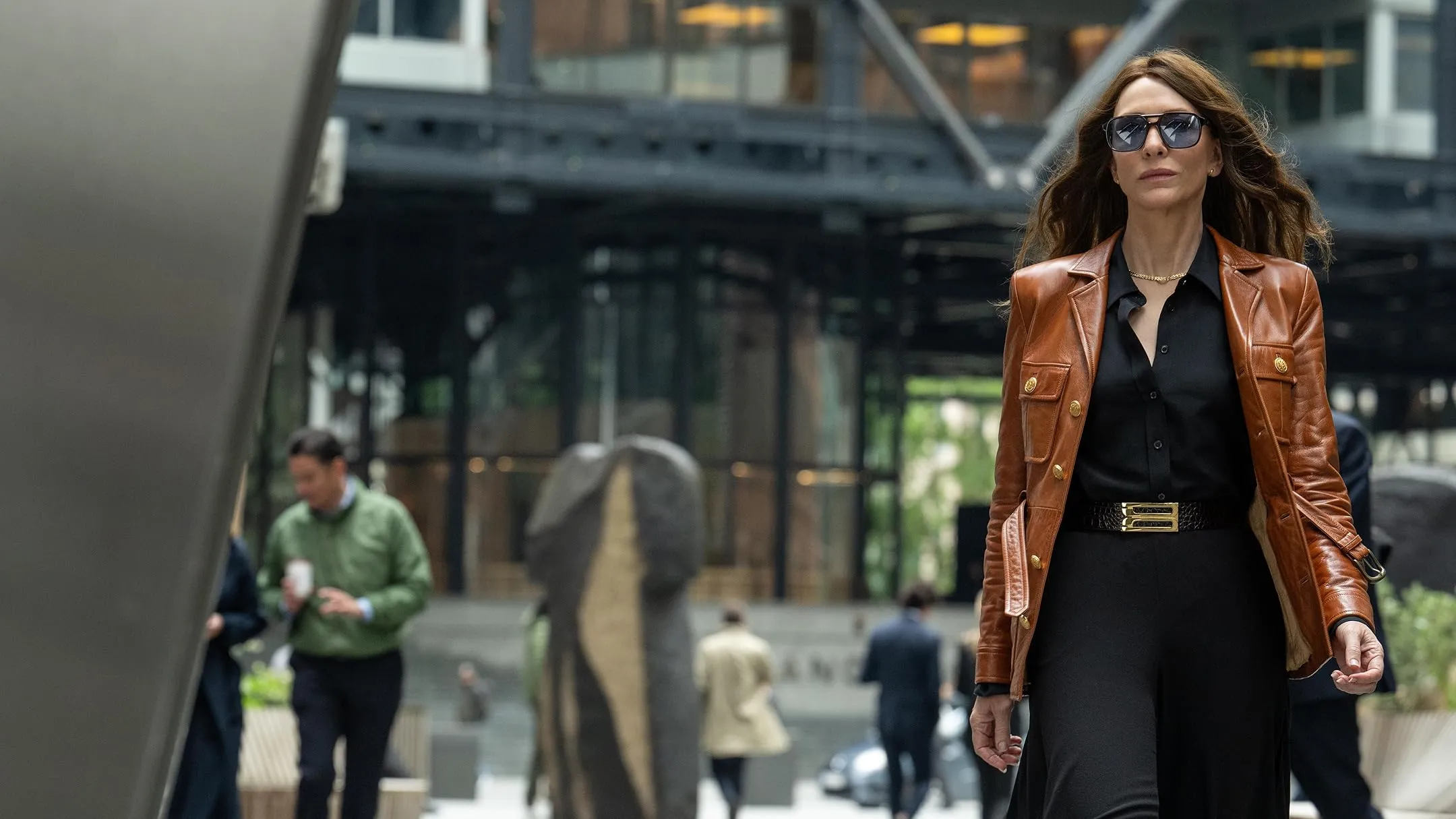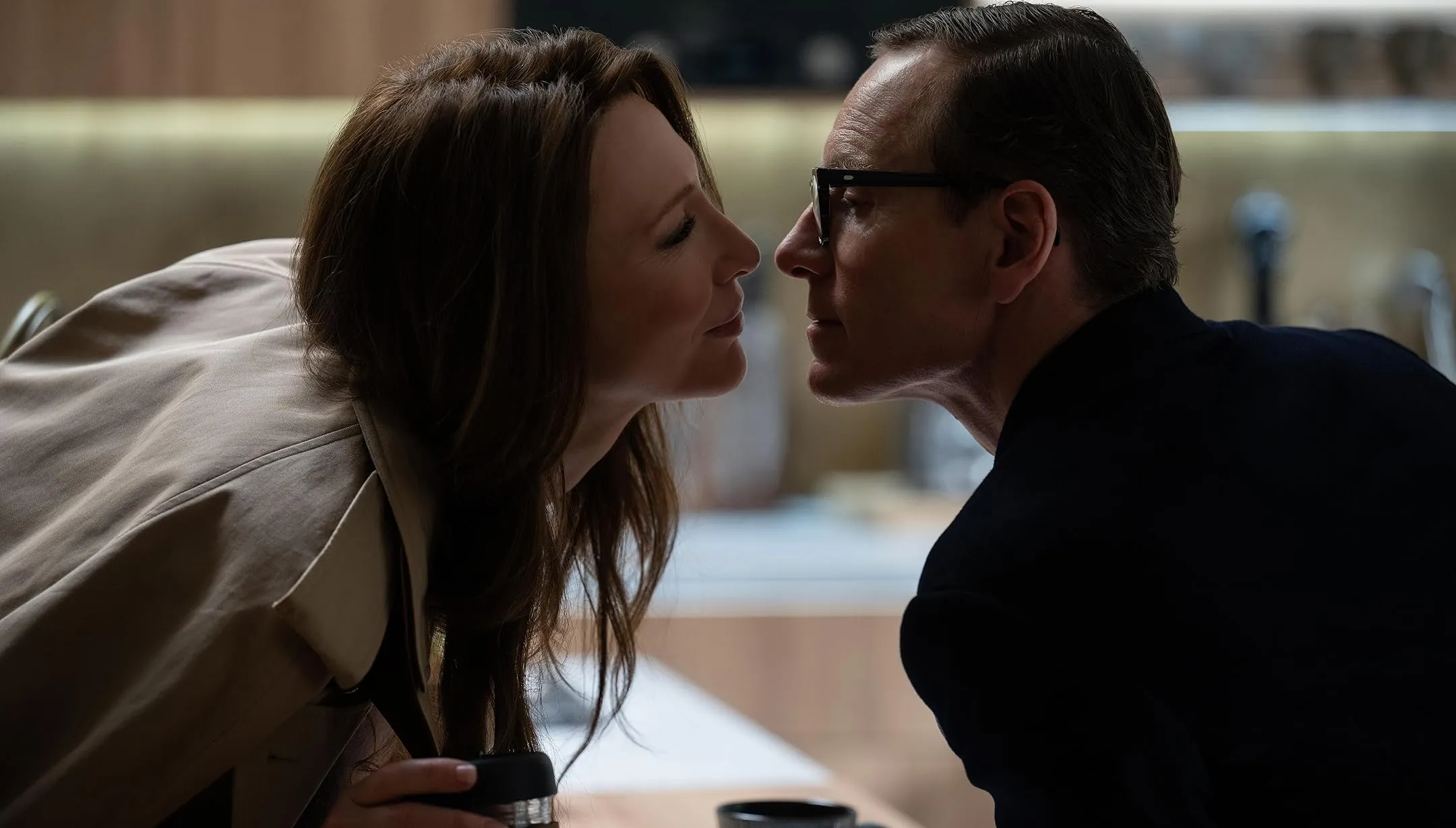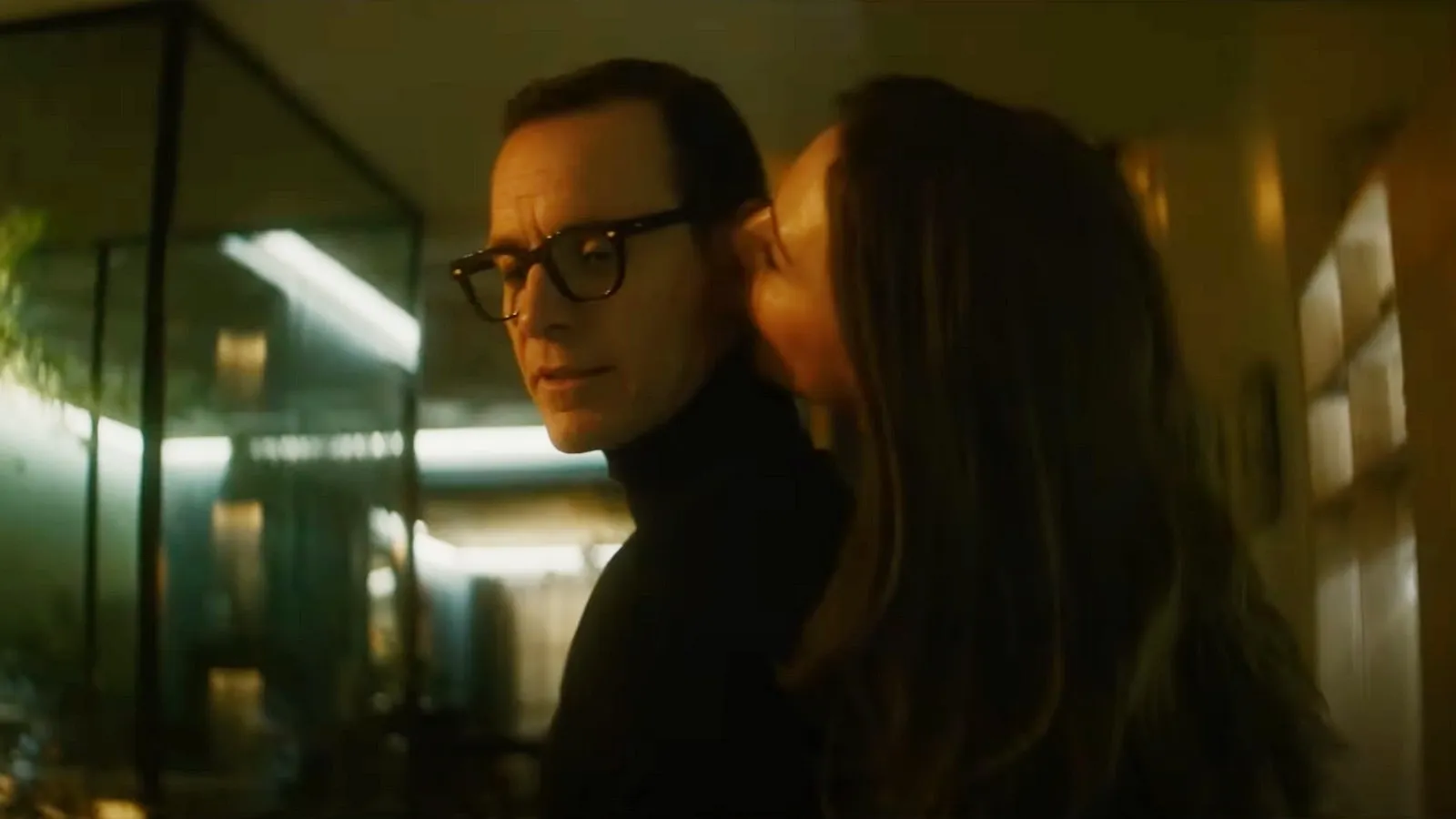In Black Bag, viewers encounter a narrative that interlaces covert operations with the complexities of a long-term relationship. The film tells the story of a missing cyber-worm device, known as Severus, whose potential misuse sends ripples of suspicion among intelligence operatives.
The investigation ignites a tension that spills over into the personal lives of the agents, especially affecting the relationship between agent George Woodhouse and his wife, Kathryn St. Jean.
Steven Soderbergh brings his familiar style to the screen, marked by a measured visual rhythm and a thoughtful approach to the unfolding story. His work with screenwriter David Koepp results in a plot that gently exposes the simmering conflict behind a polished exterior.
The film’s setting in London transforms the city into both backdrop and participant, its modern elements blending with the time-honored motifs of spy fiction. The reliance on advanced technology contrasts with the classic world of espionage, where high-stakes maneuvers are interlaced with personal betrayals.
At the heart of the narrative, the professional mission to recover Severus casts a long shadow over the characters’ personal loyalties, inviting viewers to question how far one might go to protect national interests when personal trust is at stake.
Twists and Turns: A Dance of Intrigue
Black Bag unfolds its storyline with careful buildup from the moment George receives a directive to uncover a traitor within his agency. The briefing incident immediately raises questions about allegiance and personal loyalty, setting the stage for a mystery that evolves with each scene.
This moment sparks a series of events that gradually expose hidden tensions, where every interaction hints at secrets lying beneath the surface.
A standout sequence occurs at a dinner party, where an unconventional method—a truth-revealing substance—brings hidden details to light. In this setting, every comment and subtle gesture among the guests serves as a hint, inviting viewers to piece together each character’s hidden motives.
The conversation and measured responses during this gathering create an environment where suspicion steadily intensifies. Each participant’s behavior adds a fresh nuance to the mystery, encouraging the audience to question the reliability of every word.
The narrative also connects the high-stakes investigation with the personal world of George and his partner, Kathryn. Their shared mission is complicated by an ever-present tension that blurs the line between duty and private life.
The delicate balance of trust and doubt within their long-term bond enriches the unfolding mystery, presenting a puzzle in which professional commitments and personal connections interlace.
Clever twists and unexpected shifts in focus keep viewers alert, as redirections in the plot maintain a careful rhythm that both teases and tests expectations. The film leaves us with a lingering question about the true nature of trust and whether any secret remains hidden for long.
Under the Surface: Relationships and Realizations
The film presents its characters with an attention to detail that sharpens every quiet moment of tension. Michael Fassbender’s portrayal of George Woodhouse comes across as controlled and precise, yet there is a noticeable weight behind his calm exterior.
His deliberate actions and measured expressions hint at personal vulnerabilities that complicate his role as an agent. George’s reserved manner conceals uncertainties that affect his ability to trust those around him, adding layers to his professional and personal challenges.
Cate Blanchett gives life to Kathryn St. Jean with a performance that is both refined and unpredictable. Her presence on screen brings forward a mix of calm composure and hidden emotional currents.
There is a subtle play in her expressions and pauses, leaving viewers to wonder if her calm is a mask for something more ambiguous. This ambiguity raises questions about her loyalty and whether her serene demeanor hides secret motives.
The supporting cast fills in the gaps with carefully crafted roles. Regé-Jean Page’s Colonel James Stokes appears as a dependable team member who carries personal ambitions quietly in the background.
Naomie Harris offers a thoughtful take as Dr. Zoe Vaughan, whose role in monitoring the group adds a layer of psychological insight to the unfolding events. Meanwhile, Tom Burke and Marisa Abela portray characters whose personal shortcomings and indiscretions stir the atmosphere with a mix of charm and unpredictability.
Interactions among the ensemble frequently spark subtle shifts in the mood. A brief glance, a slight change in tone, or a hesitant remark speaks volumes, enriching the overall fabric of the narrative. The measured dialogue and controlled body language contribute significantly to the work’s sense of secrecy and uncertainty, inviting viewers to consider how every personal connection might affect the unfolding drama.
Technical Craft and Visual Precision
Soderbergh directs with a style marked by smooth camera motion, deliberate cuts, and a rhythm that mirrors the calm composure of its characters. His work on Black Bag displays a visual elegance that pairs moments of suspense with subtle hints of humor.
The director’s use of fluid camera work and meticulous editing creates a narrative pace that keeps viewers engaged while revealing layers of complexity.
A striking element is the film’s reliance on sinuous tracking shots that keep tension simmering throughout each scene. Careful framing isolates characters even amidst busy urban scenes, highlighting the loneliness that often accompanies life in the world of espionage.
Lighting techniques, including the use of lens flares and carefully managed contrasts, serve to accentuate the interplay between shadow and light. These choices contribute to an atmosphere that is both cool and alert, echoing the dual nature of the characters’ personal and professional lives.
The sound design further reinforces this mood. David Holmes’ score punctuates key moments with measured beats, and the ambient soundscape works in tandem with the score to heighten the sense of unease. Sparse sound effects complement the visual narrative without overwhelming the dialogue, crafting an experience that feels thoughtfully layered.
Soderbergh also assumes responsibility for the film’s editing, shaping a narrative that balances moments of quiet exposition with bursts of brisk action. This technical management ensures that each scene adds to the tension while keeping the plot moving forward at a steady pace.
The production design, evident in the contrast between upscale London residences and the streamlined interiors of intelligence facilities, mirrors the film’s core conflict—a clash between time-honored espionage techniques and contemporary technological risks. The result is a carefully constructed visual and auditory experience that invites viewers to consider the art behind each carefully composed shot.
Symbolic Layers: Trust, Secrets, and Espionage
The film examines the delicate balance between trust and suspicion, spotlighting personal connections where every exchange carries hidden implications. The narrative invites us to observe relationships strained by uncertainties and concealed motivations.
The title, “Black Bag,” quietly suggests a repository of confidential information and private deceptions—a tangible symbol of both official secrecy and the personal lies that complicate intimate bonds.
Technology, represented by the cyber-worm “Severus,” contrasts with time-honored spy methods, prompting a reflection on how traditional and modern techniques converge in a world marked by digital risks. Subtle dialogue and measured pauses reveal layers of meaning, hinting that a casual remark might conceal deeper truths.
This interplay between spoken words and unspoken tensions enriches the viewing experience, much like how nuanced game mechanics can transform a straightforward challenge into an emotionally charged narrative.
By drawing attention to the impact of suspected infidelity and covert operations on personal dynamics, the film invites us to consider how everyday interactions can be as complex as a well-designed puzzle. The intricate relationship between professional duty and private vulnerability leaves us wondering about the cost of keeping secrets in an environment where every whisper matters.
Final Reflections: The Intricate Web of Secrecy
Black Bag presents a spy thriller that marries high-stakes covert work with the complexities of personal connection. The narrative shifts seamlessly between tense intelligence operations and the delicate strains of a marital partnership, inviting viewers to question where commitment ends and suspicion begins.
A tightly structured storyline holds attention with measured shifts from moments of quiet introspection to bursts of sudden action. Every twist in the plot prompts the audience to reconsider the value of trust when every interaction might conceal a hidden agenda.
The film’s narrative rhythm mirrors the challenges faced by its characters. A series of well-timed plot twists prompts reflection on how personal loyalties conflict with professional obligations. Characters’ subtle expressions and understated interactions amplify the emotional undercurrent, prompting thoughts about the real cost of maintaining secrecy.
Technical prowess supports these themes, as precise editing and thoughtful visual composition ensure that every scene feels integral to the unfolding story. This interplay between narrative and style encourages the viewer to remain alert to the interplay of personal sacrifice and professional duty.
One is left wondering about the price of living a life shrouded in secrets and whether trust can ever survive in a realm ruled by uncertainty.
The Review
Black Bag
Black Bag is a stylish spy film that fuses high-stakes covert work with the intricacies of personal trust. Soderbergh delivers crisp visuals and steady pacing that sustain suspense throughout the narrative. Its sharp performances and subtle twists offer a rewarding watch for fans of smart thrillers. While some plot elements may feel underdeveloped, the film impresses with its cool execution.
PROS
- Crisp visual style
- Steady pacing
CONS
- Underdeveloped plot elements
- Occasional narrative ambiguity




















































